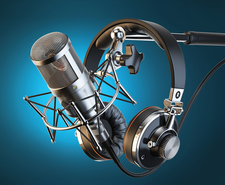Starting a podcast with Linux and Audacity
Live Mic

Audacity is a free, open source, easy-to-use, multitrack audio recording and editing tool perfect for podcasts.
Audacity [1] is one of those "must-have" tools for anyone who records or edits audio files. It is cross-platform (macOS, Windows, Linux), making sharing files and collaboration easier. The Audacity audio editor and recorder comes with an easy-to-use interface and works with a wide range of hardware. Audacity supports direct microphone or through-a-mixer recording in mono or stereo, and it includes some convenient keyboard shortcuts for more efficient editing. You can record directly into Audacity or open most audio and some video file types for editing. In this article, I cover direct recording into Audacity using a single source (microphone) and some basic editing. You will only use a handful of effects and features for simple podcasting. The effects I describe in this article are the ones I use most often. I've done some advanced editing, but those few times are exceptions.
Pro Tip: Make your podcast more appealing to listeners by removing silence, adding intro and outro clips, and adding background music.
One of the most-often-asked questions about podcasting is, "How much does it cost to start a podcast?" The answer sounds sarcastic, but it ranges from $0 to thousands. It's $0 if you have a functional computer running Linux, use an onboard microphone, and install Audacity. Hosting might also be free if you use one of the free online aggregation services. These services take your podcast and distribute it to seven or eight of the big podcast providers, such as Google Podcasts, Apple Podcasts, Amazon Music, and others. You could also purchase a new computer, a new high-end microphone or set of microphones, a mixing device, and you get the idea. If you have a computer you can use, install Linux on it, install Audacity, and buy a good microphone. The microphone's price often reflects its quality. However, a microphone at the $100 price point will serve you well. You can always upgrade later should you acquire sponsors or followers who donate to your show.
[...]
Buy this article as PDF
(incl. VAT)
Buy Linux Magazine
Subscribe to our Linux Newsletters
Find Linux and Open Source Jobs
Subscribe to our ADMIN Newsletters
Support Our Work
Linux Magazine content is made possible with support from readers like you. Please consider contributing when you’ve found an article to be beneficial.

News
-
Parrot OS Switches to KDE Plasma Desktop
Yet another distro is making the move to the KDE Plasma desktop.
-
TUXEDO Announces Gemini 17
TUXEDO Computers has released the fourth generation of its Gemini laptop with plenty of updates.
-
Two New Distros Adopt Enlightenment
MX Moksha and AV Linux 25 join ranks with Bodhi Linux and embrace the Enlightenment desktop.
-
Solus Linux 4.8 Removes Python 2
Solus Linux 4.8 has been released with the latest Linux kernel, updated desktops, and a key removal.
-
Zorin OS 18 Hits over a Million Downloads
If you doubt Linux isn't gaining popularity, you only have to look at Zorin OS's download numbers.
-
TUXEDO Computers Scraps Snapdragon X1E-Based Laptop
Due to issues with a Snapdragon CPU, TUXEDO Computers has cancelled its plans to release a laptop based on this elite hardware.
-
Debian Unleashes Debian Libre Live
Debian Libre Live keeps your machine free of proprietary software.
-
Valve Announces Pending Release of Steam Machine
Shout it to the heavens: Steam Machine, powered by Linux, is set to arrive in 2026.
-
Happy Birthday, ADMIN Magazine!
ADMIN is celebrating its 15th anniversary with issue #90.
-
Another Linux Malware Discovered
Russian hackers use Hyper-V to hide malware within Linux virtual machines.

